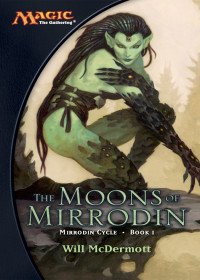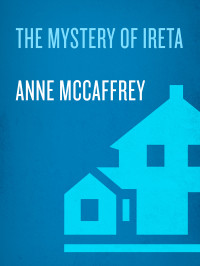
Chopin's Funeral
Benita EislerFrédéric Chopin’s reputation as one of the Great Romantics endures, but as Benita Eisler reveals in her elegant and elegiac biography, the man was more complicated than his iconic image.
A classicist, conservative, and dandy who relished his conquest of Parisian society, the Polish émigré was for a while blessed with genius, acclaim, and the love of Europe’s most infamous woman writer, George Sand. But by the age of 39, the man whose brilliant compositions had thrilled audiences in the most fashionable salons lay dying of consumption, penniless and abandoned by his lover. In the fall of 1849, his lavish funeral was attended by thousands—but not by George Sand.
In this intimate portrait of an embattled man, Eisler tells the story of a turbulent love affair, of pain and loss redeemed by art, and of worlds—both private and public—convulsed by momentous change.
From Publishers Weekly
Biographer Eisler, whose last book was on Byron, has moved to much more heavily trodden ground with this one, and it is to her credit that she manages to make the brief arc of the exiled Polish composer's life so affecting. She begins with a journalistic close-up of Chopin's funeral, which ironically was a lavish affair, though in his last months of sickness he was neglected by most of his society friends. Eisler then proceeds to the familiar story of his triumphant arrival on the Paris scene and the swift liaison with the notorious George Sand. Wisely skipping over the couple's disastrous and endlessly dramatized winter together on Majorca, Eisler focuses her well-researched attention on the closing years of the composer's life. She has an excellent chapter on Chopin's unhappy time in England and Scotland; and she writes with real vigor and sympathy of the byzantine family politics that embroiled the Sand household, both at the country retreat Nohant and in Paris, where the novelist turned away from her daughter Solange and rested her hopes on her far less worthy son, Maurice. In the end it was Solange who comforted the dying composer after Sand had ruthlessly thrust him from her life. Chopin's failings-his rigid conservatism and snobbishness, his political timidity and frequent financial selfishness-are made clear; but Eisler, deeply sympathetic to the quality of the music, also shows that he never ceased to struggle, despite perpetual illness, to expand his extraordinary gift into areas where no musician had previously ventured. The book adds little to the sum of Chopin scholarship, but is a skillfully written and mercifully brief overview that hits the right notes.
Copyright 2003 Reed Business Information, Inc.
From Booklist
The innovative pianist-composer Chopin (1810-49) moved in the highest circles of French society but, frail and tubercular throughout his adult life, lived in emotional solitude. His story, which Eisler starts to retell from its end in a massive funeral in Paris, is entwined with that of his famous lover, novelist and political activist George Sand, with whom, from 1838 to 1846, he shared Nohant, her home in the French countryside, in the summer and apartments in Paris in the winter. Trained in Warsaw, Chopin performed mostly his own music, concertizing in Vienna and Warsaw before moving in 1831 to Paris, where, with Sand as his manager, he made a career of playing in private salons as well as publicly. Temperamentally conservative and Catholic, he escaped to England during the1848 revolution, returning to Paris after seven months. There he died, a broken man, deeply in debt, surrounded by his closest friends. Eisler portrays him as tender but also as a dandy, whose life constitutes a cameo in a French society torn by revolution. Alan Hirsch
Copyright © American Library Association. All rights reserved
Review
“A wonderfully evocative melding of music and life.” — Financial Times
“[Written] with poetic insight and admirable brevity, combining analytical skill with that of a novelist.” — *New York Times Book Review
- “A captivating narrative. . . . [Eisler] manages to infuse cultural history with heartbreak.” — *New York Sun
- “Psychologically compelling. . . . Eisler writes beautifully about Chopin’s music.” -- *The Christian Science Monitor
From the Trade Paperback edition.
From the Inside Flap
The author of the acclaimed biography Byron: Child of Passion, Fool of Fame brings to life a closely fo-
cused portrait of another great romantic artist, Frédéric Chopin.
At twenty-one, Chopin fled Russian-occupied Poland for exile in France. He would never see his native country again. With only two public concerts in as many years, he became a star of Parisian society and a legendary performer at its salons, revered by his great contemporaries Schumann, Liszt, and the painter Eugène Delacroix. Blessed with genius, success, and the love of Europe?s most famous?and infamous?woman novelist, George Sand, Chopin?s years of triumph ended with his expulsion from paradise: less than two decades after his conquest of Paris, the composer lay destitute and dying in the arms of Sand?s estranged daughter, Solange. Chopin?s Funeral is the story of this fatal fall from grace, of an Oedipal tragedy unfolding, and of illness and loss redeemed by the radical breakthrough of the composer?s last style.
Richly textured and artfully compressed, Chopin?s Funeral is an intimate close-up of an embattled man, grappling with conflict on all sides: family violence, political passions, and, not least, his own dependency and pride. With consummate skill Benita Eisler tells the story of the artist as exile, of an explosive love affair, and of worlds?private and public?convulsed by momentous change.
From the Back Cover
Frederic Chopin's reputation as one of the Great Romantics endures, but as Benita Eisler reveals in her elegant and elegiac biography, the man was more complicated than his iconic image.
A classicist, conservative, and dandy who relished his conquest of Parisian society, the Polish emigre was for a while blessed with genius, acclaim, and the love of Europe's most infamous woman writer, George Sand. But by the age of 39, the man whose brilliant compositions had thrilled audiences in the most fashionable salons lay dying of consumption, penniless and abandoned by his lover. In the fall of 1849, his lavish funeral was attended by thousands--but not by George Sand.
In this intimate portrait of an embattled man, Eisler tells the story of a turbulent love affair, of pain and loss redeemed by art, and of worlds--both private and public--convulsed by momentous change.
About the Author
Benita Eisler is the author of Byron and O’Keeffe and Stieglitz: An American Romance. She
lives in Manhattan.
Excerpt. © Reprinted by permission. All rights reserved.
- Lacrymosa ies illa: "What weeping on that day"
On a sparkling Paris morning, Tuesday, October 30, 1849, crowds poured into the square in front of the Church of the Madeleine. The occasion was the funeral of Frédéric Chopin, and for it, the entire facade of the great neoclassical temple had been draped in swags of black velvet centered with a cartouche bearing the silver-embroidered initials FC.
Admission was by invitation only: Between three thousand and four thousand had received the black-bordered cards. Observing the square with its crush of carriages, the liveried grooms and sleek horses, the throngs converging on the porch, Hector Berlioz reported that "the whole of artistic and aristocratic Paris was there." But another who surveyed the crowd, the music critic for the Times of London, suspected that of the four thousand who filled the pews, a large number had been admitted just before noon, strangers to the dead man, mere bystanders even, "many of whom, perhaps, had never heard of him."
If death is a mirror of life, Chopin's funeral reflected all the disjunctions of his brief existence. The most private of artists, his genius was mourned in a public event worthy of a head of state. Canonized as "angelic," a Shelleyan "poet of the keyboard," Chopin seemed to personify romanticism, and before he was buried, its myths had already embalmed him: a short and tragic life; an heroic role as Polish patriot and exile; doomed lover of the century's most notorious woman; and finally, his death from consumption, that killer of youth, beauty, genius, and of courtesans foolish enough to fall in love.
In reality, he was the least romantic of artists. While the generation that had come of age just before his own in France, including the Olympian Victor Hugo, had defined romanticism as a holy war of the "moderns" (themselves) against the "ancients" (their literary elders), setting off riots in theaters to make their point, Chopin clung to the past. His musical touchstones were Haydn, Mozart-but especially Bach. He harbored doubts about Beethoven's lapses of taste, was incurious about the music of Schubert, and generally contemptuous of his other contemporaries: Schumann, Berlioz, and Liszt, towards whom his feelings were further tangled by rivalrous friendship. In art, he preferred the marmoreal neoclassicism of Ingres and his followers to the radical inventions in color and form of his friend Delacroix. Socially and politically, he was still more conservative.
The same aristocratic circles that had embraced Chopin the child prodigy in Warsaw were waiting to welcome the twenty-one-year-old sensation of Paris. Chopin arrived in France in 1831. One year before, revolution had replaced the Bourbon Restoration with the Orleanists swept in by Louis Philippe and his July monarchy. It was still a world of fixed hierarchies: of titles, birth, and breeding, buoyed by a flood tide of fresh money coined by the financiers and industrialists whose entertainments outshone the Sun King in splendor, if not in style. Chopin made some friends among the professional middle class-a less grand banker or diplomat, a few fellow musicians. He had a horror of "the People" as a force of upheaval or even change (which he dreaded in any form), and he was suspicious of those who championed their cause. He was appalled by that quintessentially romantic belief, whose most ardent proponent was George Sand, that art must serve the cause of social justice-or, indeed, any other cause except itself.
Like many who have thrived as "exceptions," propelled by talent from modest origins to a place among the privileged, Chopin was repelled by marginality: by poor Poles, by Jews, by the ill-dressed and ill-mannered, by coarseness or slovenliness, in art or life.
Most likenesses of the composer suggest that he was far from handsome. He had pale, colorless hair, a thin, hooked nose, a pursey mouth, and rabbity, lashless eyes. In these images, Chopin bears only a glancing resemblance to his famous portrait by Delacroix-the portrait of romantic genius itself, with his tousled chestnut mane and burning inward gaze. Chopin's famous dandyism, then, must be understood as another labor of creation, like his music an imperious quest for perfection. The dandy enlists distinction-in dress, speech, manners-along with distance, to create a masterpiece: himself.
What appeared to many-then and now-as the snobbery of a provincial, self-invented aristocrat and aesthete, had deeper sources. Chopin needed the reassurance that a fixed social order provides. Dependent and childlike in many ways, he clung to the security of protective institutions-the monarchy, the Church, and the family-which defined themselves proudly as patriarchal, stern but loving fathers keeping watch over children, dedicated to exalting an ideal past and to keeping present chaos at bay.
Two years and only two public concerts after his arrival in Paris, Chopin ranked among those few artists who moved in every circle that counted. Ignoring protocol, older, established musicians called upon him. He was a fixture at the grandest houses, where, arriving in his own carriage, he was welcomed as a lionized guest who never failed to charm and amuse; if he could be prevailed upon to perform, he hypnotized every listener. The musically knowledgeable drew close to the piano to study the wizardry of his technique and his famous inventions in fingering, third finger crossing the fourth, that made his impossibly difficult compositions appear effortless. Fellow exiles heard laments for a homeland in the languorous rubato of the mazurkas, with their heart-catching drop from major to minor keys, but the mood of elegy was as often shattered by discordant salvos of unleashed rage. Even those guests whose attendance was simply an occasion to wear the new diamonds, to remark casually at the bourse that the reception last evening at Baron James's had been more than usually delightful, stayed well past midnight, straining to hear the final note, when the pianist, pale and exhausted, rose wearily to take his bow. It was uncanny how Chopin's music spoke so intimately to their most private, long-buried thoughts and memories, evoking childhood happiness and lost love; innocent, nobler selves trampled by the harsh rules of life.
Seventeen years later, he died, destitute, in an apartment paid for by friends at the most fashionable address in the most expensive quarter of Paris.
Now, at the funeral, emissaries from the world of music were outnumbered by mourners from the ranks of the rich and titled. The Polish émigré aristocracy and its French counterpart among the old noblesse were in turn outshone by new money: bankers and speculators whose wives and daughters had also been among Chopin's pupils. Certain of the fashionable, one reporter noted, appeared indecorously attired in brilliant colors, glittering with jewels.
While the crowd filed through the portal, the closed casket
was carried from the sanctuary and placed under an elaborate catafalque ("utterly pretentious," in the view of Paris's leading music critic) at the transept. Chopin's embalmed body had lain
in the crypt for almost two weeks since his death on October
17, aged thirty-nine. His dying had been long and terrible, the disease that killed him still not diagnosed with certainty: tuberculosis of the larynx, cystic fibrosis, mitral stenosis, or a rare viral infection?
With a dandy's discipline, in his final agony of slow suffocation, Chopin had planned the musical program whose principal offering was to be a performance of Mozart's Requiem. Unknown to the dying man, women were not permitted to sing in the city's parish churches; it had taken days of pleading on the part of Chopin's most powerful friends before a special dispensation was issued by the Archbishop of Paris. The decree allowed female participation provided it remained invisible; thus the women singers, including Chopin's friend Pauline Viardot among the featured soloists, were hidden from view behind a black velvet curtain.
As the mourners took their places, the organist played the funeral march from Chopin's own Sonata in B-flat Minor. Then, the choir of the Paris Conservatory sounded the opening notes
of the Requiem's Introitus, followed by the first solo-"Te
decet hymnus, Deus," Viardot sang, her glorious mezzo-soprano soaring above the chorus and orchestra. Then, voices and instruments were stilled while the priest chanted the High Mass for the Dead.
The pallbearers emerged from their pews. Two princes, Adam and Alexandre Czartoryski, represented the community of Polish exiles. The painter Eugène Delacroix mourned the friend he had both loved and revered, calling him "the truest artist among us." From the world of music, the composer Giacomo Meyerbeer, decorations glinting against his dark mourning attire, appeared the personification of success. He had been the merest acquaintance, but Chopin, passionate for opera, had been a fan, like millions of others who had made Meyerbeer a rich man. In contrast, cellist and composer Auguste Franchomme was known to few. But the modest, scholarly professor at the Conservatory had been the inspiration for the only music Chopin would ever write for an instrument other than the piano. Franchomme was followed by a collaborator of another kind, Camille Pleyel, manufacturer of the pianos that Chopin, more than any other composer who ever lived, had made the instrument of genius.
Shouldering the massive coffin, the six men moved up the nave to the sounds of the organ playing Chopin's Preludes in E Minor and B Minor. Many of those now leaving had heard the composer play these pieces-his favorites-in their own houses, in the salons of friends, or in Pleyel's concert rooms. The familiar notes on the somber instrument spoke of the voice they would never hear again, and they wept.
Outside the church, the mourners gather...
 Amazon
Amazon  Barnes & Noble
Barnes & Noble  Bookshop.org
Bookshop.org  Konwertuj pliki
Konwertuj pliki Więcej wyników wyszukiwania
Więcej wyników wyszukiwania Inne korzyści
Inne korzyści 












